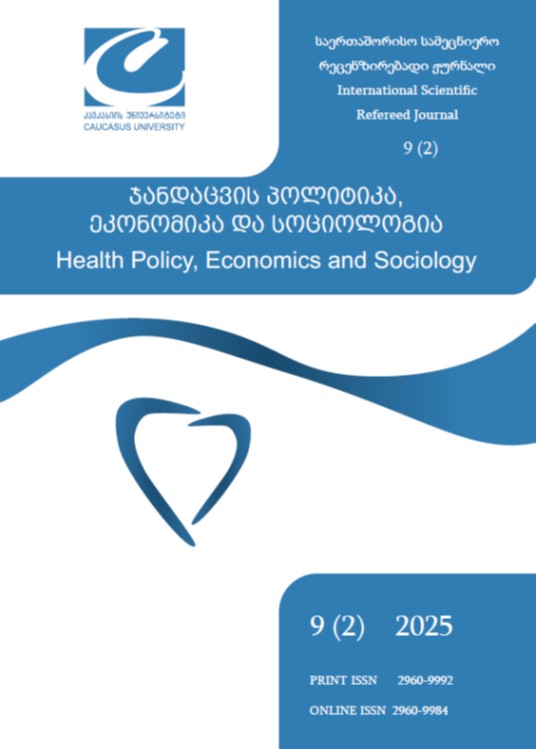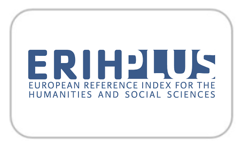Implementing a Results-Based Financing Model in the Primary Health Care Sector of Georgia: An Analysis of the Estonian Experience
DOI:
https://doi.org/10.52340/healthecosoc.2025.09.02.11Keywords:
healthcare reform, Estonia, results-based financing, capitation, Primary health careAbstract
Introduction: Primary health care (PHC) is a fundamental instrument for improving population health, preventing diseases, and reducing healthcare costs. In Georgia, the existing financing model was based on a uniform fixed capitation, which does not adequately account for age-related differences in health needs and fails to provide sufficient incentives for quality improvement. In response to these challenges, Georgia will launch a primary health care financing reform in July 2025, introducing age-adjusted capitation and performance-based payment mechanisms. This study aims to analyze the expected impact of the reform, drawing on Estonia’s successful experience. Methods: A comparative policy analysis approach was used. Official documents, ministerial decrees, and normative acts related to Georgia’s primary health care financing model were reviewed. Additionally, a literature review of Estonia’s primary health care experience was conducted. Results: The reform in Georgia will replace the single fixed capitation with an age-adjusted payment model that better reflects health needs across different life stages. The performance-based financing mechanism incentivizes primary care providers to achieve specific clinical indicators such as blood pressure control and childhood immunization. If less than 30% of these indicators are met, the facility will lose its status as a provider of planned outpatient services. Facilities will also be required to meet specific structural conditions, including maintaining electronic registries for chronic diseases, providing expanded service packages, and ensuring continuous medical education for staff. Estonia’s experience has demonstrated the effectiveness of such mechanisms. Since the introduction of a similar system in 2006, Estonia has significantly improved early detection of chronic diseases, increased the frequency of preventive check-ups, enhanced patient outcomes, improved patient satisfaction, and reduced unnecessary hospitalizations. Discussion: Age-adjusted capitation ensures equitable allocation of resources according to patient needs, while performance-based payments create strong incentives for quality improvement and the development of preventive care. Successful implementation, however, requires addressing several challenges: ensuring a qualified workforce, strengthening digital health infrastructure, and promoting continuous professional development of primary care teams. Additionally, establishing monitoring mechanisms and regularly evaluating indicators are essential to prevent undesirable outcomes, such as provider demotivation. Conclusion: The introduction of an age-adjusted and performance-based financing model represents a significant shift in Georgia’s primary health care system. Drawing on European best practices and Estonia’s successful example, the reform has the potential to substantially improve service quality, population health outcomes, and cost-effectiveness. Its success will depend on coordinated policy implementation, stakeholder engagement, and continuous system monitoring. This study underscores the importance of leveraging international experience within the national context as a pathway toward more effective and equitable primary health care financing.
References
• ასრათაშვილი ა., მინდიაშვილი ს., წიქორიძე თ., ქაფიანიძე შ. (2019). პირველადი ჯანდაცვის ექთნების როლი გულის უკმარისობის პაციენტების ინფორმირებულობის ამაღლებაში. ჯანდაცვის პოლიტიკა, ეკონომიკა და სოციოლოგია, 1, 29–34.
• ვერულავა თ, აბაშიძე გ. (2024). პირველადი ჯანდაცვის ექიმებთან პაციენტის ნდობაზე მოქმედი ფაქტორები. ეკონომისტი. 20 (4); 164-176
• ვერულავა თ., (2024). პირველადი ჯანდაცვის დაფინანსების მეთოდები საქართველოში: გამოწვევები და პერსპექტივები. ეკონომიკა და ბიზნესი, 16 (1)
• ვერულავა თ., ჯორბენაძე ა. პირველადი ჯანდაცვის რეფორმირების 1995-2003 წლების გამოცდილება და რეკომენდაციები. ეკონომისტი. 2022;2:23-41.
• ვერულავა თ., ჭილაძე გ., ბარკალაია თ. პირველადი ჯანდაცვის პერსონალის მოტივაციის და სამუშაოთი კმაყოფილების გამოწვევები საქართველოში. ეკონომისტი. 2022; 3.
• ვერულავა თ, ჯორბენაძე რ. (2020). პირველადი ჯანდაცვის მეკარიბჭეობა და მიმართვიანობა: პაციენტების თვალსაზრისი ოჯახის ექიმის როლზე. ეკონომიკა და ბიზნესი. 12 (1).
• ვერულავა თ., ბერუაშვილი დ. (2019). ოჯახის ექიმთან მიმართვიანობის პრობლემები საქართველოში. ჯანდაცვის პოლიტიკა, ეკონომიკა და სოციოლოგია, 5 (1).
• ვერულავა თ. (2018). პირველადი ჯანდაცვის გამოწვევები საქართველოში. გლობალიზაცია და ბიზნესი. ევროპის უნივერსიტეტი. (5): 259-262.
• EHIF (2018). Estonian Health Insurance Fund Yearbook 2018. Tallinn. (https://www.haigekassa.ee/sites/default/files/uuringud_aruanded/2018_majandusaastaaruanne_eng_0.pdf
• Family Physicians Association (2019). Hea tahte koostöökokkulepe „Perearstiabi jätkusuutlikkuse tagamine” [Goodwill cooperation agreement ‘Ensuring the sustainability of family medical care’]. (https://www.perearstiselts.ee/eestiperearstide-selts/meist/organisatsioon/hea-tahte-leppe
• Habicht T, Kasekamp K, Webb E (2022). Primary health care reforms in Estonia: using financial incentives to encourage multidisciplinary care. European Journal of Public Health, 32(Supplement_3). doi: 10.1093/EURPUB/CKAC129.625.
• Kantar EMOR (2022). Eesti elanike hinnangud arstiabile [Patient Evaluation of Health and Health care]. Tallinn. (https://www.tervisekassa.ee/sites/default/files/uuringud_aruanded/Elanike hinnangud arstiabile 2022_KantarEmor.pdf
• Kasekamp K, Habicht T, Kalda R (2022). The Milestones of Reforming Primary Health Care in Estonia. The Milestones of Refoming Primary Health Care in Estonia. https://www.lshtm.ac.uk/media/59811
• Kasekamp K, Habicht T, Võrk A, Köhler K, Reinap M, Kahur K, Laarmann H, Litvinova Y. Estonia: Health system review. Health Systems in Transition, 2023; 25(5): i–204.
• Koppel A, Meiesaar K, Valtonen H, Metsa A. Evaluation of primary health care reform in Estonia. Soc Sci Med 2003;56:2461–6.














